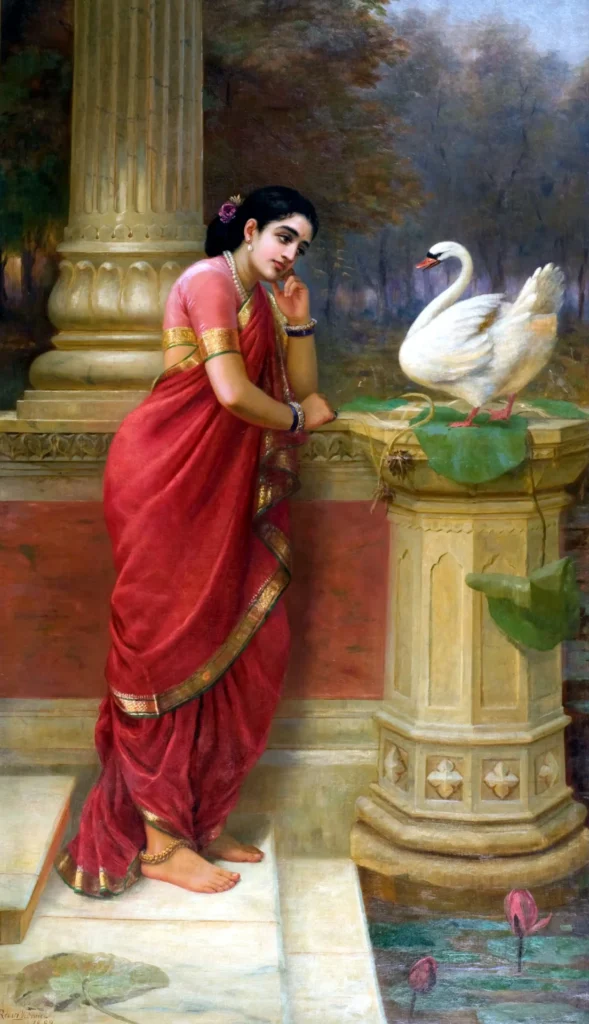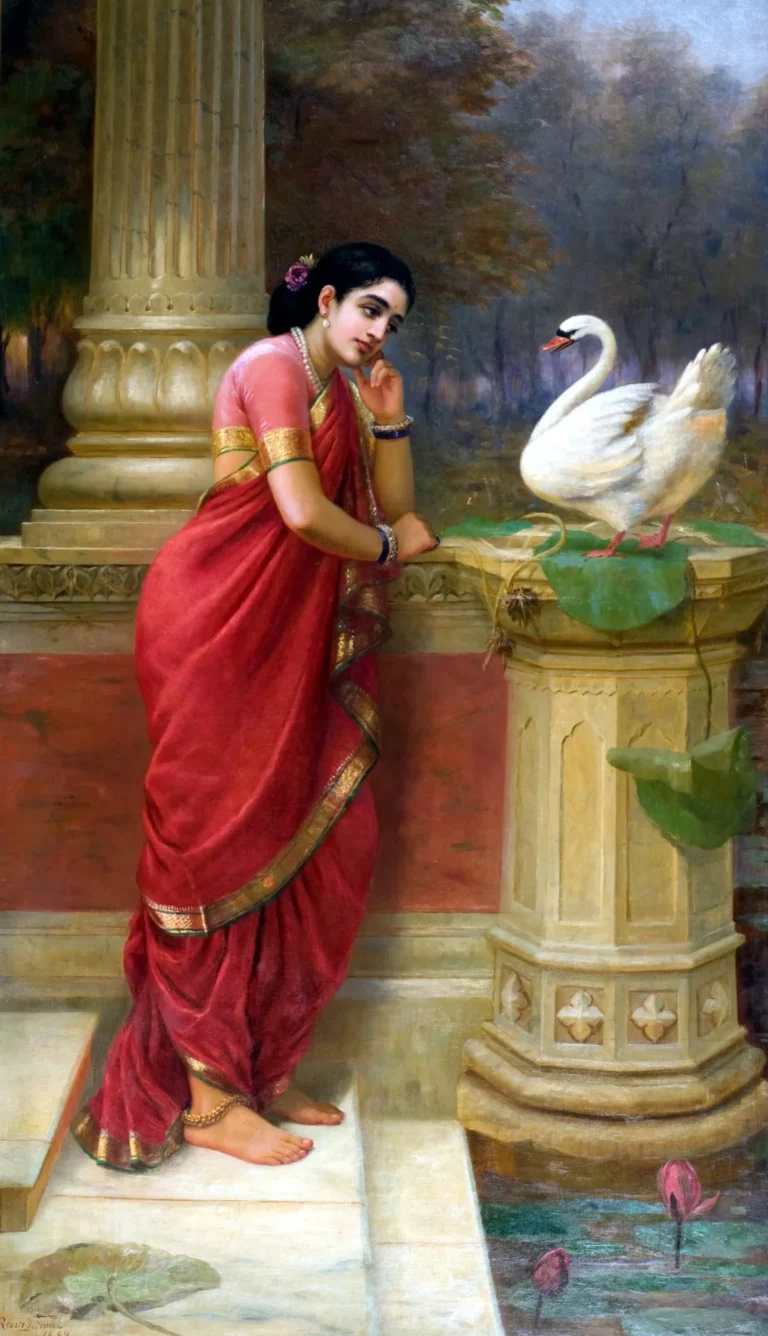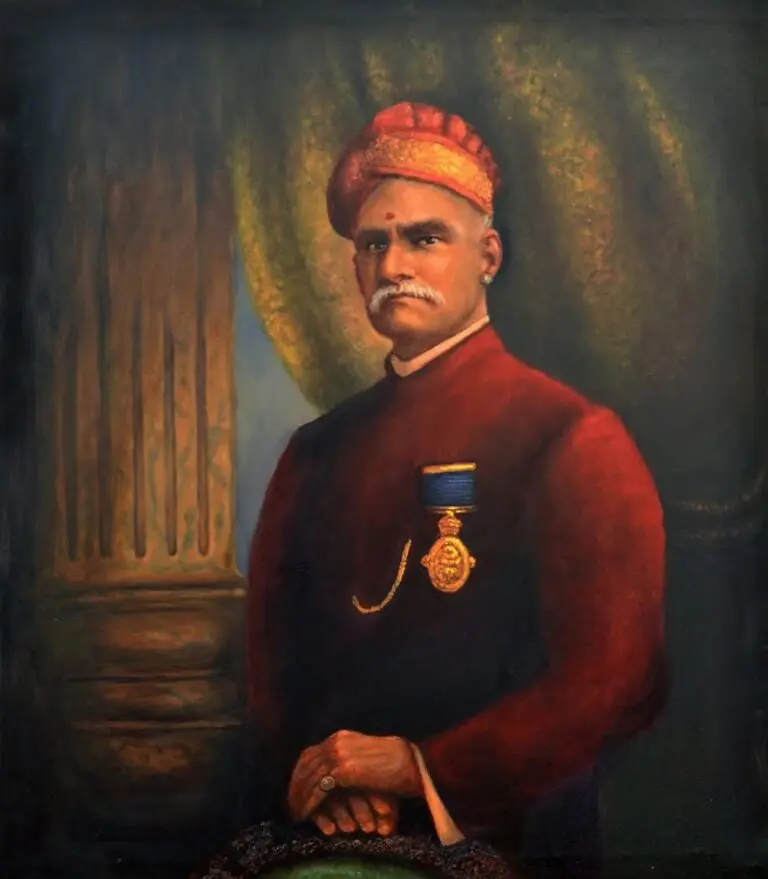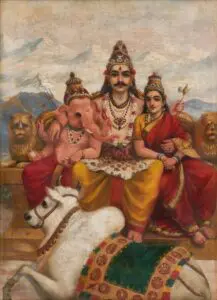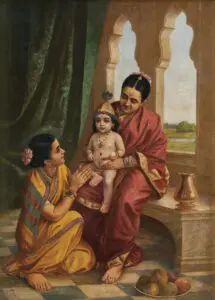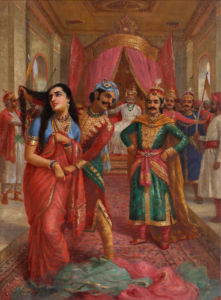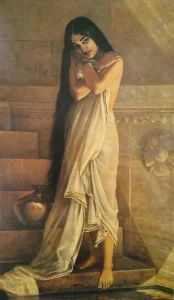Damayanti and the Swan
Damayanti and the Swan is a mesmerizing painting that captures a scene from the ancient Indian epic Mahabharata. Here, the beautiful princess Damayanti listens intently to a golden swan as it speaks of the virtues of Nala, a noble king. Ravi Varma masterfully portrays Damayanti’s grace and the enchanted atmosphere, with soft colors and exquisite detailing that bring the scene to life. The painting’s elegance and storytelling have made it an enduring symbol of love and destiny in Indian art.
Late 19th Century
About the Artwork
Raja Ravi Varma's painting, Damayanti and the Swan, popularly known as Hamsa Damayanti, created in 1899, captures a significant moment from the Mahabharata, depicting the princess Damayanti conversing with a divine swan. This swan serves as a messenger, relaying the love of Nala, the king of Nishada, to Damayanti. The narrative is rooted in themes of love, loyalty, and destiny.
The Legend of Damayanti and Nala
Damayanti, renowned for her beauty, was initially sought after by gods, including Lord Indra. However, a storm led the swan sent by her mother to Nala's kingdom instead. Impressed by Nala's kindness, the swan returned to Damayanti, extolling Nala's virtues. This encounter sparked a profound love between them despite never having met in person. The story unfolds with challenges imposed by the gods, leading to Nala losing his kingdom through gambling and subsequently abandoning Damayanti in the forest out of guilt. Undeterred, Damayanti embarked on a quest to find him, demonstrating her unwavering devotion. After years of trials, they reunited and ruled Nishada together.Did You Know
Did you know that the swan in this story is often seen as a symbol of fate? It not only connects Nala and Damayanti but also plays a pivotal role in shaping the future events of their epic love story.
Did you know that the gods themselves sent the swan to Damayanti? It carried a divine message, urging her to choose Nala as her suitor. This divine intervention highlighted the gods’ interest in their union.
Did you know that after their union, Nala and Damayanti faced numerous trials, including separation and hardships due to a curse? Despite their suffering, their love endured, making their story one of resilience and deep devotion.




